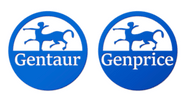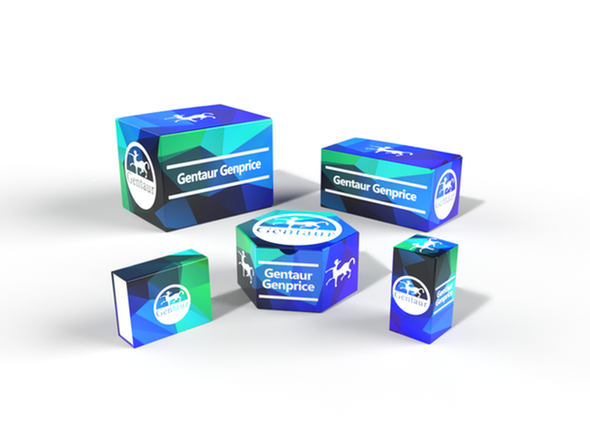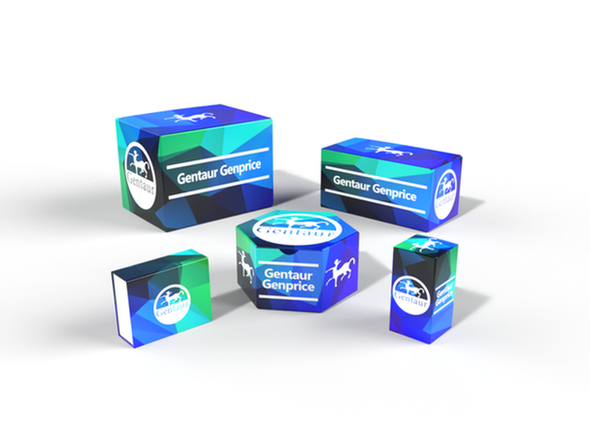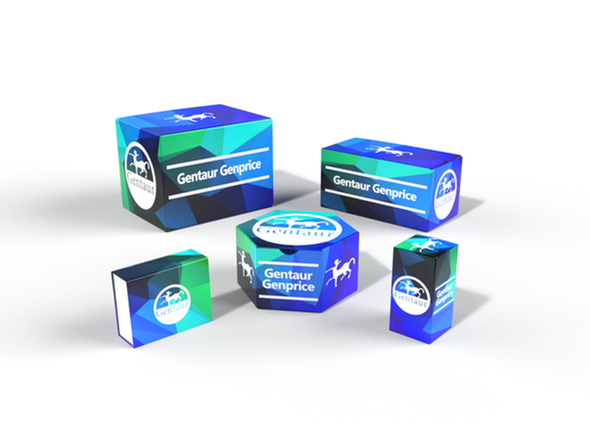Description
Collagen Type 1 Antibody | 36-353 | Gentaur UK, US & Europe Distribution
Host: Rabbit
Reactivity: Bovine, Cat, Dog, Hamster, Human, Mouse, Pig, Rat, Sheep
Homology: N/A
Immunogen: Synthetic peptide (human sequence) corresponding to the C-terminal end of the N-terminal three quarter collagen fragment (Col1 ¾) .
Research Area: Cancer, Immunology, Innate Immunity
Tested Application: ICC
Application: Immunocytochemistry: (2.5-10ug/ml) . Optimal conditions must be determined individually for each application.
Specificiy: Recognizes rat and bovine collagen type 1. Based on sequence identity should also recognize human, mouse, guinea pig, dog, cat, donkey, pig, cow, sheep and chicken collagen type 1.
Positive Control 1: N/A
Positive Control 2: N/A
Positive Control 3: N/A
Positive Control 4: N/A
Positive Control 5: N/A
Positive Control 6: N/A
Molecular Weight: N/A
Validation: N/A
Isoform: N/A
Purification: Antigen affinity purified.
Clonality: Polyclonal
Clone: N/A
Isotype: N/A
Conjugate: Unconjugated
Physical State: Liquid
Buffer: Liquid. In PBS with 1 mg/ml BSA and 0.02% sodium azide.
Concentration: 250 ug/ml
Storage Condition: Stable for at least 1 year after receipt when stored at -20˚C. Stable for at least 6 months after receipt when stored at -20˚C.
Alternate Name: COL1; alpha-1 Type I Collagen
User Note: Optimal dilutions for each application to be determined by the researcher.
BACKGROUND: The proteolysis of collagens plays an important role in numerous physiological and pathological situations such as morphogenesis, wound healing, arthritis, arteriosclerosis and tumor metastasis. Triple helical type I collagens are made up of two alpha1 (I) and one alpha2 (I) chains, and are found in skin, tendon, ligament and interstitial tissues. Due to their fibrillary structure native collagens are resistant to most proteases. They are substrates for certain matrix metalloproteinases (MMPs) , which constitute a family of zinc-dependent enzymes catalyzing the degradation of extracellular matrix components. Initial MMP-8 dependent cleavage of collagen into the characteristic ¾ and ¼ fragments has been shown to enable MMP-9 diffusion along the protein helix with preferential binding to the collagen ¾ fragment tail. Finally, untwisting of the helix end results in the local denaturation of the triple helical structure.










